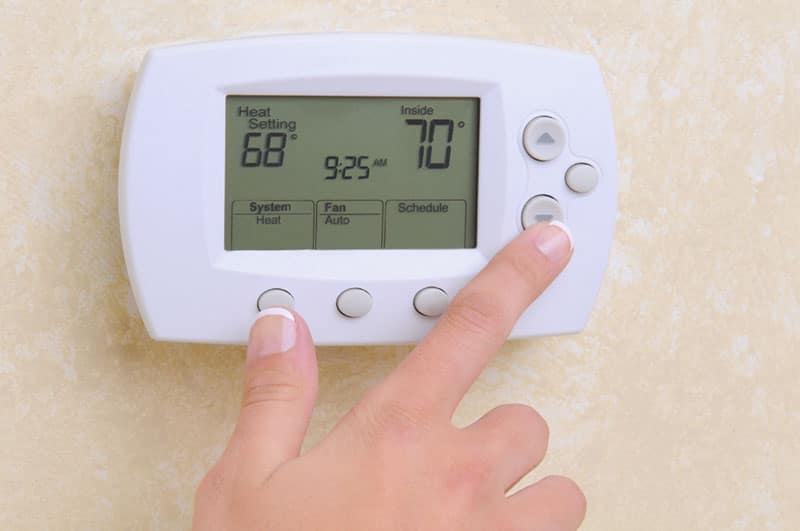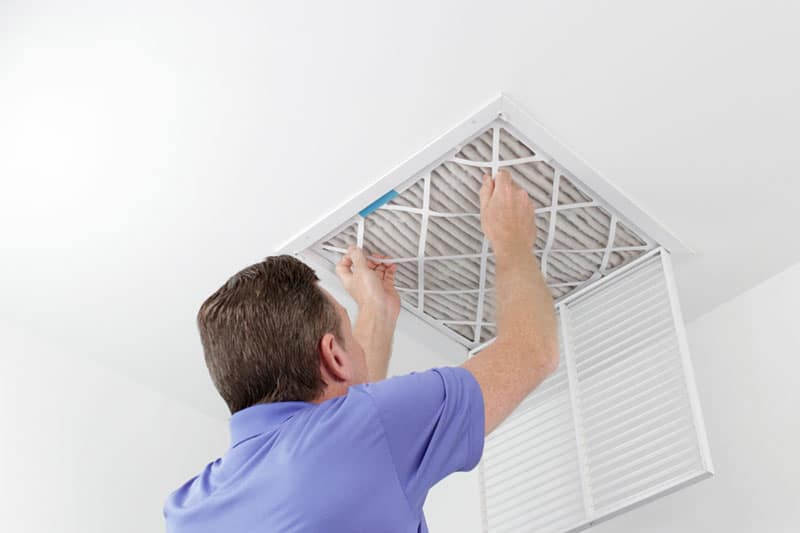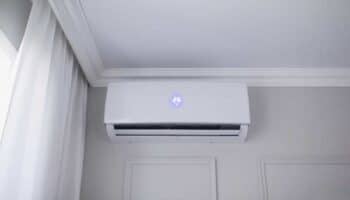We've independently reviewed this article to make sure it's as accurate as we can make it.
To find out more about our article creation and review process, check out our editorial guidelines.
It’s not the heat, it’s the humidity!
In my opinion, both are bad, but humidity does make heat worse. But what if you’re air conditioner isn’t removing enough humidity? Having a house that feels like a steamy bathroom is terrible.
Fortunately, there are some things you can check and perhaps fix yourself. Or you may need to provide a little help for your air conditioner.
Either way, I’ll provide some solutions below so keep reading.
4 Reasons Why Your Air Conditioner Isn’t Removing Humidity
Despite what the dehumidifier salespeople will try to tell make you believe, your air conditioner does and should pull humidity from the air.
Let’s look to Carrier for the answer. After all, they invented the first modern air conditioner back in 1902.
“Air conditioners . . . all operate on the same basic premise. An air conditioner provides cold air inside your home or enclosed space by actually removing heat and humidity from the indoor air. It returns the cooled air to the indoor space and transfers the unwanted heat and humidity outside.”
After that, you’re left with nice cool, dry air inside. Hopefully.
But as you already know, sometimes air conditioners don’t seem to be doing the job they should be doing. So let’s get into that.
| 4 Reasons for AC Not Removing Humidity |
|---|
| You Have Your Thermostat’s Fan Setting to ON |
| Dirty Evaporator Coils |
| You May Have Low Refrigerant Levels |
| You Have Leaky Ducts |
| Your Fan Speed Is Too High |
1. You Have Your Thermostat Fan Set to ON

Your thermostat likely has two fan settings. On is AUTO and the other ON.
AUTO. This setting will turn your fan on and off in tandem with your air conditioner—and furnace—cycling on and off. So if the air conditioner isn’t running, neither is your fan.
ON. This setting runs your fan all the time, regardless of whether your air conditioner is working to cool your home.
There are times when using the ON setting is beneficial but if you need to remove humidity, this isn’t one of them. The AUTO setting works better at removing humidity. How?
While it’s running, the evaporator coils of your air conditioner work to pull heat and humidity out of you home. They do this by absorbing it, then blowing cold air back into the house. But collected moisture is still sitting on the coils.
What eventually happens to that moisture depends on your thermostat setting.
If you’ve selected AUTO, every time your fan shuts off the air in your settles. This provides time for the moisture collected on the coils to drain outside as it’s intended to.
But if you have your thermostat set to ON, you never give your system time to drain that condensation away. Your fan keeps running—keeps blowing that moisture around your house.
Solution: It’s a simple one, and it’s free! If your thermostat is set to on, change it to AUTO.
2. Dirty Evaporator Coils
Once again, your evaporator coil could be the source of the problem, just for a different reason.
As stated above, your evaporator coils are what pull the heat and moisture from your home. The problem? If they are caked in dirt and grime, they will have difficulty doing that.
This translates into you air conditioner running longer and working harder, trying to do its job—remove humidity from your home. Oh, and by the way. While your air conditioner is working hard but still not doing what it was intended to do, it’s costing you more money.
So keep your evaporator coils clean. You’ll be cooler, dryer, and have more money.
Solution: If you have your HVAC components serviced regularly, this is part of their service. And you should be doing this at least every few years.
If you need to check your coils between service calls, you’ll need to find them first. Every system is different, so yours might be housed inside a fan coil or air handler. It could also be mounted on the furnace in its own cabinet.
Once you have turned off your system and found your coils, you can clean them with a light brushing.
If you need a little more power, you can buy evaporator coil cleaning spray at big box hardware stores. Just follow the instructions on the box and you’ll have things clean in no time.
You also have the option of using commercial cleaners, detergent and water, or more heavy duty options.
3. You May Have Low Refrigerant Levels
One more thing that your evaporator coil plays a part in. Except, this time the refrigerant it carries may be the problem.
The job of the refrigerant is to pull heat and moisture from the inside and move it to the outside. But over time, sometimes due to simple wear and tear, your refrigerant lines can spring a leak. As soon as that happens there is a decrease in the amount of heat and humidity are pulled from your home.
If you find that your home isn’t cooling as much as it used to and your humidity seems unnaturally high, it’s a good thing to have your air conditioner serviced. They can check levels and look for leaks.
Here are a few more signs to look for:
- If you hold your hand up to your supply vents, you feel warm instead of cool air
- Either your lines or the evaporator coil is covered in ice
- You can hear a hissing noise from the area of your AC lines
Solution: Unfortunately, for this one, you need to call in a HVAC pro. For safety reasons, only certified techs are allowed to handle refrigerant.
4. You Have Leaky Ducts

No, not the medical condition. That’s called leaky gut!
The reality is, unless you had a super conscientious team that installed your HVAC system, there are going to be leaks in your ductwork. There are so many joints—and often at 90-degree angle bends—it’s pretty much inevitable. Unless someone sealed every joint.
Sorry, that is highly unlikely. The EnergyStar site says that the typical house loses about 30% of the air that moves through the ductwork. Due to bad joints, leaks, and holes.
Guess what that translates to? Other than higher utility bills? A home that’s harder to cool—or heat—and higher humidity.
Part of the problem is that ductwork is usually in humid parts of the home, like the basement or the attic. Or maybe even a crawl space, depending on where you live. So all that humidity gets pulled through the ducts and into your living space.
Solution: If you have an unfinished basement or attic, you can see the exposed ducts. How bad are they? This could give you an idea of how bad the parts that aren’t exposed are too.
As far as exposed joints go, you can seal them with mastic. But if you think there are a lot of issues behind the walls, hire someone to come in. They can run a scope and check things out.
And no, you don’t use duct tape! Crazy, but true. It will dry out and crack.
Your Fan Speed Is Too High
If you’re moving the air too quickly, it may not have enough contact time with the evaporator coils for the air conditioner to draw out humidity in the air. Thankfully, this is a pretty easy solution! Just try running the air conditioner with the fan on a lower speed, and see if that helps make a difference.
Make sure to also try and seal the room that you want the humidity removed from. Even the most powerful air conditioner can only work with a certain size of an area. Make sure to close doors and windows to isolate the space you want to focus on.
Conclusion
So again, what are some probable reasons for too much humidity in your air-conditioned home?
| 4 Reasons for AC Not Removing Humidity |
|---|
| You Have Your Thermostat Set to ON |
| Dirty Evaporator Coils |
| You May Have Low Refrigerant Levels |
| You Have Leaky Ducts |
| Your Fan Speed Is Too High |
There is another reason I didn’t mention, but it probably isn’t helpful. It certainly isn’t helpful to you right now.
In some cases, an air conditioner may be over-sized for your home. This causes your home to cool off too quickly, which may seem like a good thing, but it isn’t. for one thing, it’s not enough time to pull the humidity from the air.
So assuming you can’t wave a wand and have a new one installed while reading this, knowing that size does matter won’t help you right now.
But hopefully, one of the other suggestions will help.
While you’re here, why not check out our related articles and guides below. Maybe we can help with something else as well.







